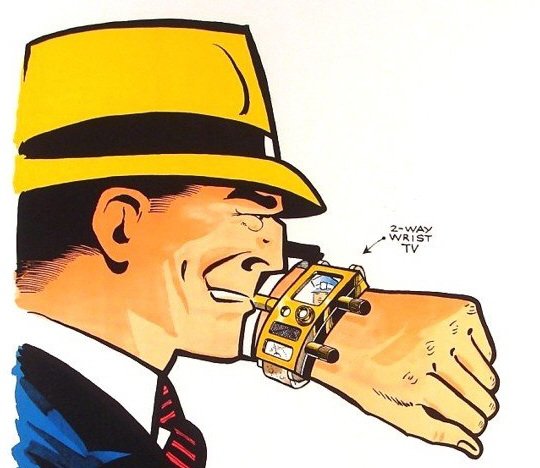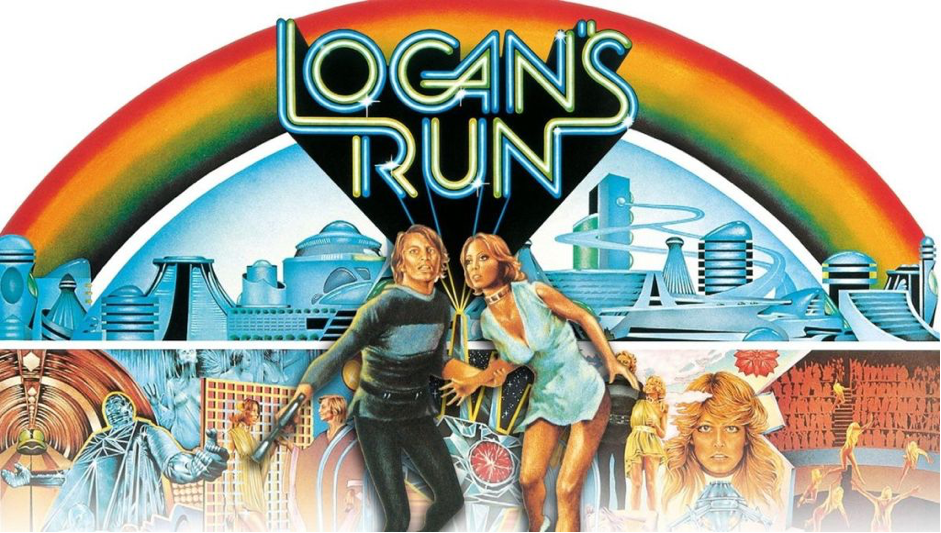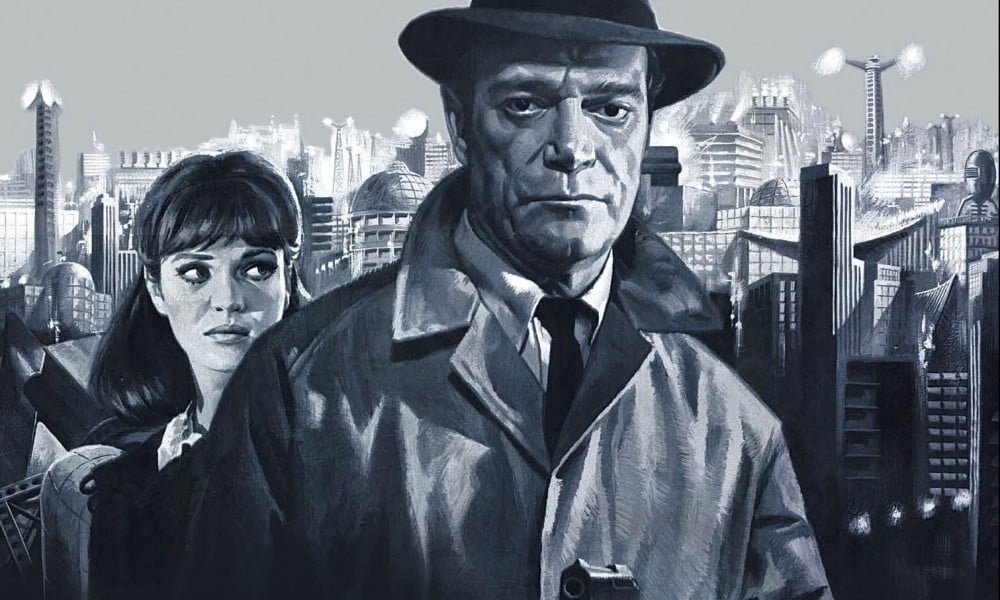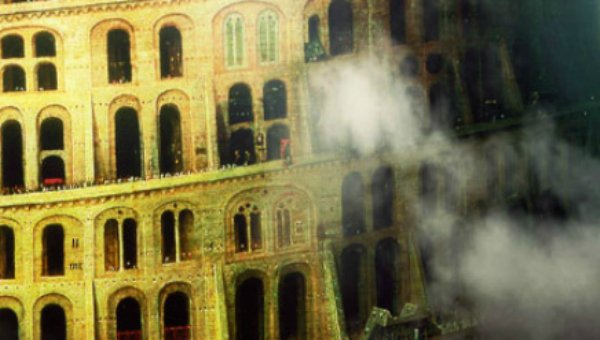What Hollywood Thinks Strata's Future Looks Like
or, future strata cities from my favourite films …
A Quick Take
Does life imitate art or vice versa? It’s a been a perennial debate that has no right answer. But, there’s no doubt that when artists imagine and depict something that doesn’t yet exist, we often see something very much like it appear. Think of Dick Tracey in the 1960s and the Apple Watch in 2015. So, is that kind of scenario possible or likely for future strata buildings too and, if so, how has Hollywood imagined their future?
[a 6:50 minute read, with 1281 words]
The Full Article
When I was a kid I watched Dick Tracey make calls from his wristwatch and pretended to do the same from my Casio. Today, Dick Tracey would be jealous of my Apple Watch.
So, since life often imitates art [at least for me], let’s look at what Hollywood thinks a high rise and high density future would look like to imagine our potential strata future in this eclectic selection of old and new sci fi films.
Do any of those strata futures look likely? Are you excited or worried about any of them? Or, are we already there?
Either way, let’s enjoy visualising the possibilities.
February 29, 2024
Francesco …
Metropolis was and is the architectural template for all futurist cities in the movies. It has glitzy skyscrapers; it has streets crowded with folk who swarm through them like ants; most importantly, it has high-up freeways linking the buildings, criss-crossing the sky, on which automobiles and trains casually run — the sine qua non of the futurist city.
LOGAN’S RUN, Michael Anderson (1976)
This is set in an enclosed dome city in the post-apocalyptic world of 2274. It looks like an exciting, go-ahead place to live and it’s certainly a great city for twentysomethings. There are the much-loved overhead monorails and people wear the sleek, figure-hugging leotards, unitards, and miniskirts. The issue is that people here get killed on their 30th birthday.
BLADE RUNNER, Ridley Scott (1982)
This film presents us with Los Angeles 2019 [BTW … that was 5 years ago now], a daunting megalopolis in which ‘replicants’ may be hiding out — that is, super-sophisticated organically correct servant-robots indistinguishable from actual humans, who have defied the rules forbidding them to enter the city. Special cops called ‘blade runners’ have to hunt them down. The city is colossal, headspinningly big, a virtual planet itself; it is cursed with terrible weather, with very rainy nights.
ALPHAVILLE, Jean-Luc Godard (1965)
Alphaville is a city on a distant planet and a very grim place, subject to Orwellian repression and thought-control by its tyrannical ruler, an AI computer called Alpha 60. The city is seen largely at night, with drab buildings which have neither the techno-futurist furniture nor the obvious decay that you expect from sci-fi dystopia. This is because it was filmed in 1960s inner-city Paris: Alphaville is the French capital’s intergalactic banlieue twin-town.
Neo-Tokyo, 2019 [BTW … also 5 years ago]. This gigantic city is like an impossibly huge sentient robot life-form in itself. It was built to replace the ‘old’ Tokyo which was immolated in a huge explosion. Now the new city is a teeming, prosperous, hi-tech place but more than a little anarchic and strange, always apparently on the verge of breaking down, and also incubating weird spiritual forces.
Greenwich Village in 2173 is a startling place: part of the 22nd-century police state in which the people are kept in a placid condition with brainwashing. A nerdy bespectacled health-food-store owner, who has been cryogenically frozen in 1973 and awakened into this brave new world, must now battle against the forces of mind-control. This Huxleyan future world actually looks rather pleasant, the architecture, décor and public transport are all not bad, and these are cities with ‘Orgasmatrons’.
MINORITY REPORT, Steven Spielberg (2002)
Washington in the year 2054 is eerie and disorientating: a shadowy, noir-y city which appears often to be underlit, and yet it certainly enjoys the benefits of the digital revolution. Moving posters are the norm (actually, they’re commonplace in cities now) and images, text and data on screens can be manipulated with extraordinary ease.
This cult cine-essay by Paul Bush is all about a fictional mega-city called Babeldom. Where this city is supposed to be is a moot point. It is everywhere and nowhere. At first it is glimpsed through a misty fog: it is the city of Babel imagined by the elder Breughel in his Tower Of Babel. It’s a way more art house view of future urban worlds.
This resource poor depiction of a world in decline where survival depends on mobility and the ability to fend for oneself in a hostile environment. That’s set against a backdrop of vast, desolate landscapes that underscore the breakdown of civilisation, with run-down and nearly abandoned urban spaces contrasted with the vast, open roads that dominate the landscape.
Set in a near-future world where privacy and anonymity have been effectively eliminated through an advanced surveillance systems. The urban space is depicted as highly technological, with a sleek, sterile aesthetic with clean lines, glass structures, and the seamless integration of technology into daily life blurring the lines public and private spaces.
BACK TO THE FUTURE, Robert Zemeckis (1985)
The film juxtaposes two different eras through the lens of a small American town, highlighting the changes in urban space and society over 30 years. The town is a suburban landscape typical of the mid-1980s America, with shopping malls, residential areas, and the local high school serving as central settings and the urban space is characterized by its accessibility by car, a reflection of the automotive culture prevalent in the USA at the time.
Set in the 28th century, where humanity has expanded its presence across the galaxy, leading to interactions with numerous alien species and cultures. The centrepiece of this future is Alpha, the titular "City of a Thousand Planets," a massive, sprawling space station that serves as a hub for the exchange of knowledge, culture, and power among a myriad of different alien species.
READY PLAYER ONE, Steven Spielberg (2018)
In the year 2045, where the world is grappling with the ramifications of overpopulation, environmental degradation, and economic decline society has turned to the OASIS, a vast and immersive virtual reality universe. The urban space is depicted as dystopian, with the majority of the population living in slum-like conditions in vast, overcrowded cities. One of the most striking visual representations of this urban decay is the ‘Stacks’, a towering piles of trailer homes stacked on top of each other.
ELYSIUM, Neill Blomkamp (2013)
The Earth in 2145 s overpopulated, polluted, and ravaged by disease and poverty. The wealthiest have fled the planet to live on Elysium, an advanced space station orbiting Earth, where technology provides them with a life of luxury and access to sophisticated medical machines that can cure any ailment, effectively granting them immortality. Urban spaces on Earth, particularly in cities like Los Angeles, are depicted as sprawling slums. Buildings are dilapidated, streets are cluttered with waste. By contrast, represents the ultimate gated community, with lush landscapes, luxurious homes, and advanced infrastructure, all designed to offer its inhabitants a perfect living environment.
THE FIFTH ELEMENT, Luc Besson (1997)
A vibrant and imaginative sci-fi film set in the 23rd century presents a future where flying vehicles zip through the skies of a densely populated, multi-levelled New York, showcasing a bustling, chaotic urban landscape that has grown vertically to accommodate the population explosion. Urban spaces are characterized by their verticality and complexity, with towering skyscrapers, elevated highways, and a myriad of airborne traffic defining the cityscape. This vertical expansion has created a layered society, where wealth and status determine one's proximity to the sunlight above.















